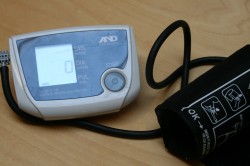04 Feb Could Your Care Plan Improve By Adding Telecare?
Smartphones, I Pads, Google Glasses….isn’t it time that we adapted today’s technological innovation to help us care for our elders? That’s the promise of telecare. The most popular telecare device, the push button pendant, debuted over 20 years ago and is still on the market. It’s sold in every color you can imagine by companies from Verizon to AARP. It works but is limited by whether or not it’s worn when needed and is effective only when the wearer has the strength, coordination and coherence to push the button in emergency. Second and third generations of Telecare have advanced greatly and hope to solve those problems with smart technology that widens the net of caring support. With A Little Help debuted modern telecare technology in 2013 integrating it into some caregiving strategies. Is telecare right for your care plan?
Telecare can help families who struggle with the cost of home health care. With A Little Help is always sensitive to financial limitations and now integrates telecare into some comprehensive care plans to help moderate cost or extend care affordably. “Telecare is by no means a replacement for personal care and interaction,” Shawn D’Amelio, Director of Business Development, “but it can be used in tandem with personal care or as a bridge to care where there is initial resistance to home visits.” At minimum a telecare device can prompt when it’s time for medication, blood pressure or blood sugar readings. Telecare sensors can also notify family or a guardian when a door opens, a threshold is crossed, or a fall occurs. Telecare watches and medallions offer GPS tracking to ease worries related to wandering. The capabilities of today’s telecare technology are impressive and robust.
Is it right for your care needs? Adaptation to a technology like telecare varies from person to person. For some it’s comfortable to use and it works. For others, it’s intrusive or too complex. In Europe, where telecare is widely integrated into health management systems, research shows a mix of benefits and limitations. Among the benefits: a greater sense of independence, enhanced confidence while aging in place, respite for caregivers, stronger feelings of security, and quicker emergency response to crisis. Among the limitations: resistance, feelings of intrusion, difficulty with use and other unanticipated individual reactions.
In early feedback about With A Little Help’s placement of telecare, reviews are positive. Telecare services are helping family members understand routines and experiences that occur when caregivers or family aren’t present. In one instance a family discovered that overdosing occurred on a regular basis. The service informed the family that medicine was being taken both during scheduled dosage times and outside of scheduled dosage times. “In the end,” our Telecare Specialist wrote summarizing this incident, “With A Little Help used innovative tools to swiftly uncover the issue and objectively communicated the issue to the family.”
Telecare fits into a global vision for improved health services as aging needs reach critical mass in America and around the world. Britain’s national project, “3 million lives,” launched in 2012, aims to integrate the services of telecare devices and telehealth capabilities to improve health outcomes within 5 years. Many of you may already be using soft telecare/telehealth aps on your own smartphone. If so, you can easily imagine the vision for future healthcare if barriers to entry for technology diminish and widespread adoption is accomplished.
In a comprehensive report by the Universities of Oxford and Leeds, published in 2013 called The role of telecare in meeting the care needs of older people, authors cite a 2004 study that emphasizes that caregivers should always start simple despite access to technology. According to the study, The British Alzheimers Society also supports simplicity. They find that only 30% of issues were resolved with telecare technology. Using “post-it notes or simple lighting devices can be as effective as telecare,” they state. Much of this report is irrelevant to America’s health care system but two or three sections feature good research, case studies, and independent analysis evaluating both caregiver and care recipient attitudes regarding telecare. If you’re trying to decide if telecare would integrate well in your care plan then browse through their report full of interesting observations and good guidance.
Care options are broader now than at any time in our history. Along with the technology in our own lives, telecare innovations for healthcare are advancing rapidly. As Aging in place emerges as a preferred direction for many families it’s also becoming an increasingly viable plan as home health care, universal design and smart technologies blend together to facilitate independence and safety at home. With A Little Help is proud to offer a full range of care as we support you and your family in the effort to keep loved ones safe and happy. Interested in telecare? Give us a call 206-352-7399.


